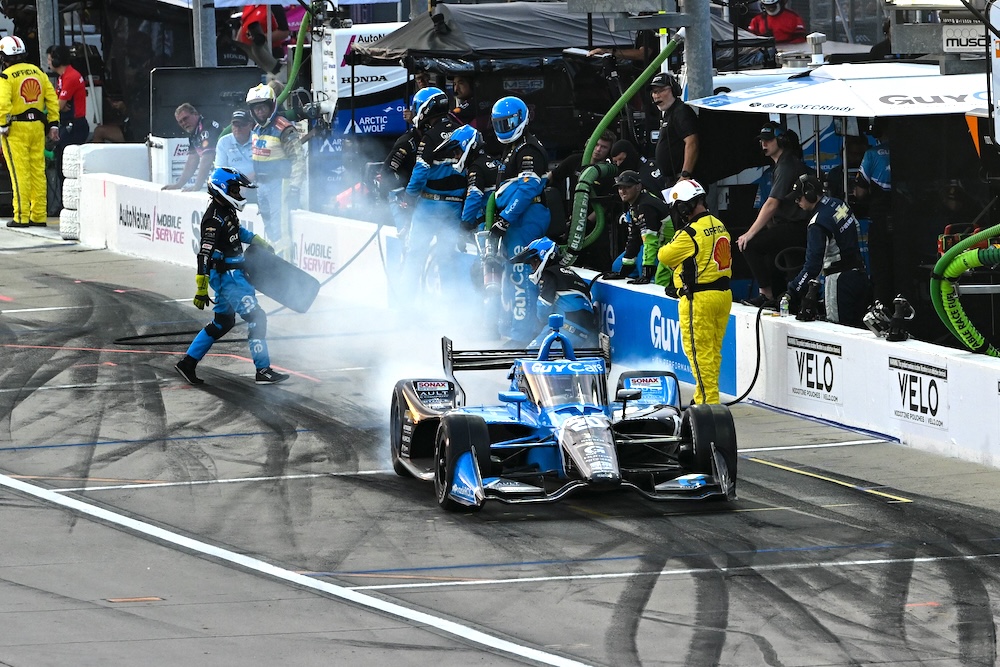The launch of the NTT IndyCar Series hybrid era has brought a range of new items to the championship, including a procedure that was put to use for the first time after Saturday night’s crash-filled 250-lap contest at Iowa Speedway.
With the addition of the new Chevy- and Honda-built energy recovery systems inside the bellhousings that bridge the internal combustion engines and transmissions, the series has set an impact threshold for the ERS units, and with numerous crashes throughout the Hy-Vee Homefront 250, the 50G limit was exceeded by multiple cars in their clashes with walls, or each other.
Rule 15.2.5.3, which governs approved ERS changeouts, calls for the spec bellhousing supplied by Ilmor Engineering to be removed if a crash exceeds 50Gs, and while there’s no mandatory change required, a physical inspection of the ERS must be performed by Ilmor and a determination is then made as to whether the bellhousing can return to duty or if it needs to be replaced.
[lawrence-auto-related count=3 category=1408]
The Chip Ganassi Racing team split Alex Palou’s crashed No. 10 Honda after the race for his ERS to be evaluated, and it was given the green light to go back for today’s 250-lapper. The same was true for Pietro Fittipaldi’s crashed No. 30 Rahal Letterman Lanigan Honda, whose ERS was, in IndyCar Medical parlance, “checked and released” and approved for competition.
The crashed No. 20 Ed Carpenter Racing Chevy wasn’t as fortunate, and was given a replacement bellhousing and fresh ERS unit for today’s event. RLL’s Christian Lundgaard also received a new ERS package after his system overheated after his first-lap spin and stall, which led to heat soak and the need for cooling before the Dane could return to the race more than 20 laps later. And Juncos Hollinger Racing Agustin Canapino, who’s No. 78 Chevy was wrecked in the crash caused by David Malukas, has a new hybrid for the race.
The last ERS change, according to the series, is with Chip Ganassi Racing’s Linus Lundqvist, whose No. 8 Honda ground to a halt late in the race. RACER understands the Swede’s ERS unit stopped working, and with its motor generator unit connected to the same input shaft that sends power from the turbo V6 motors to the transmission, a failure of any sorts with the ERS tends to come with a need to stop the car.
IndyCar’s curfew for the garages on Saturday night was 11pm, giving teams little more than 90 minutes to affect repairs. Many of the teams, including those who needed to pull and possibly replace bellhousings, tell RACER they were there past 3am ET, and returned hours later to prepare for the 12:30pm green flag.
